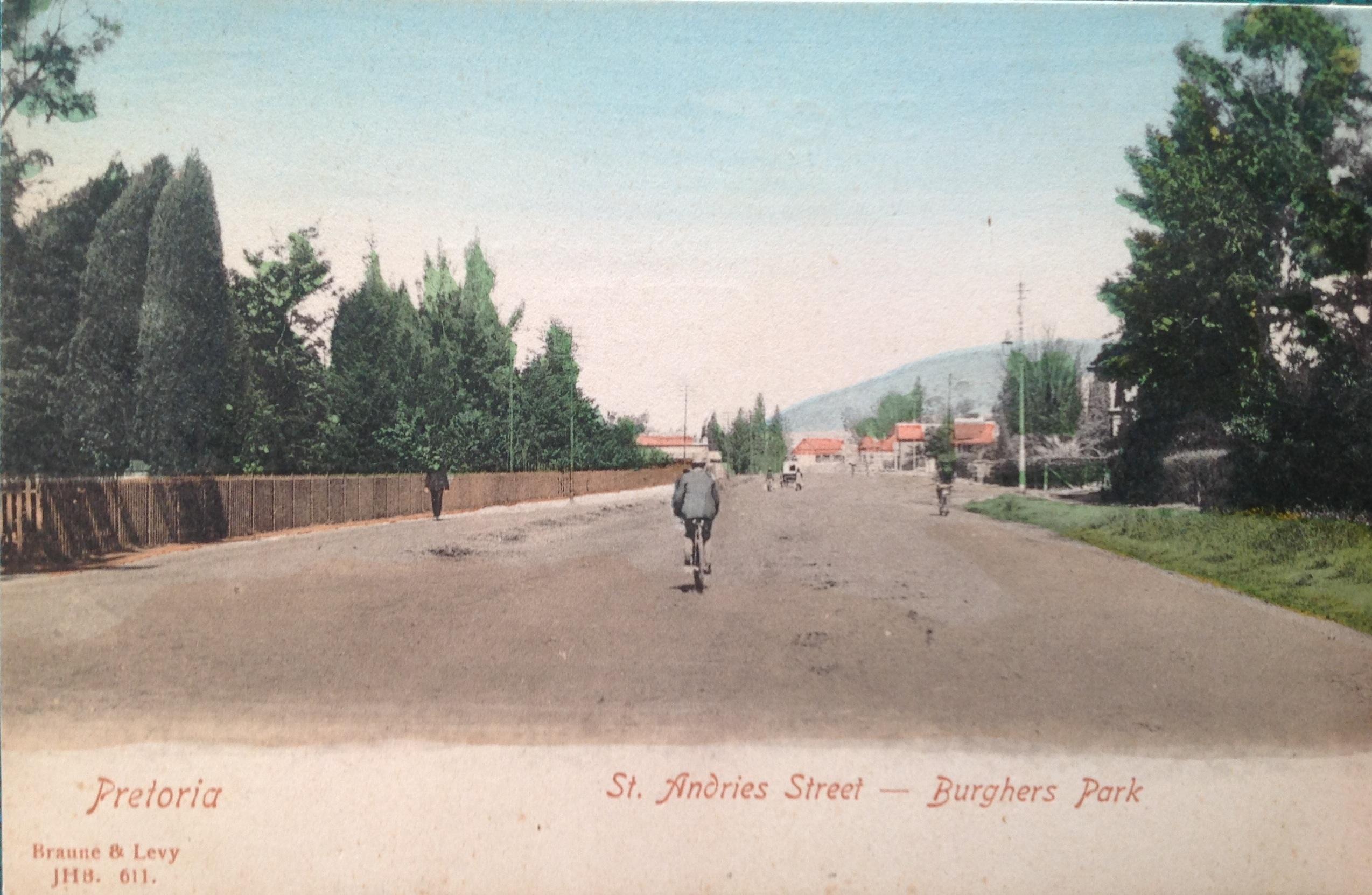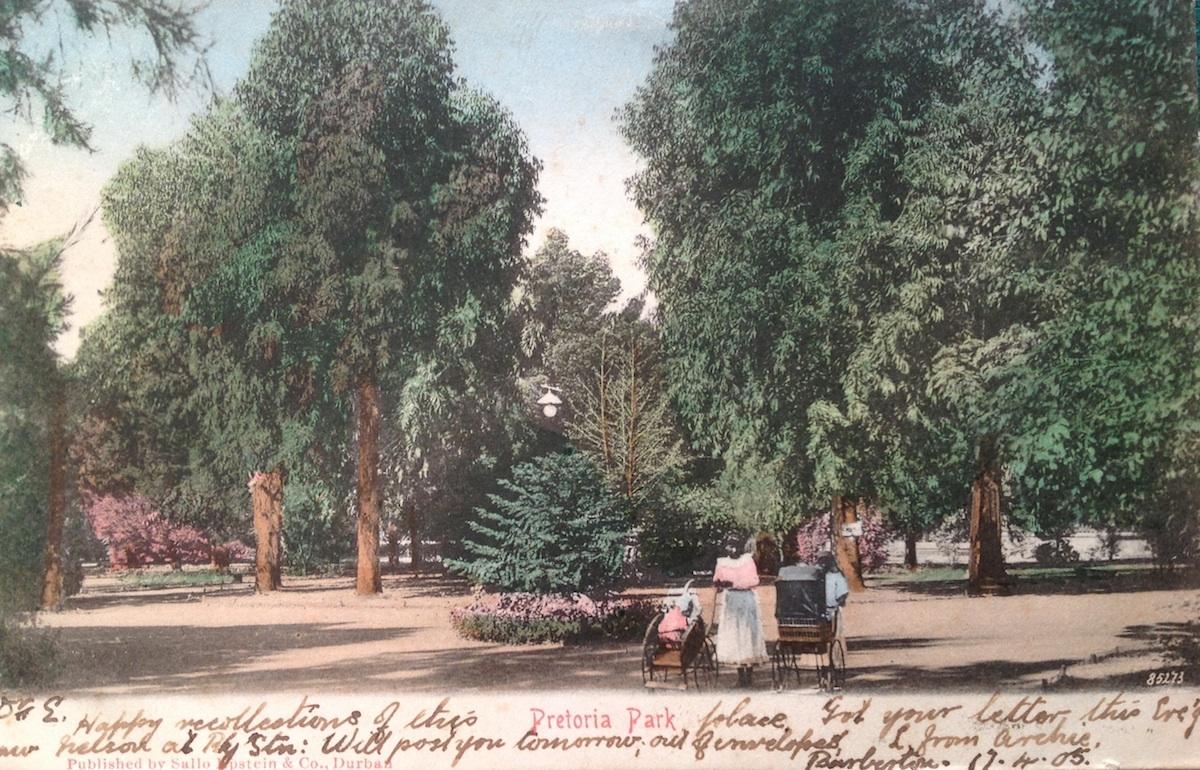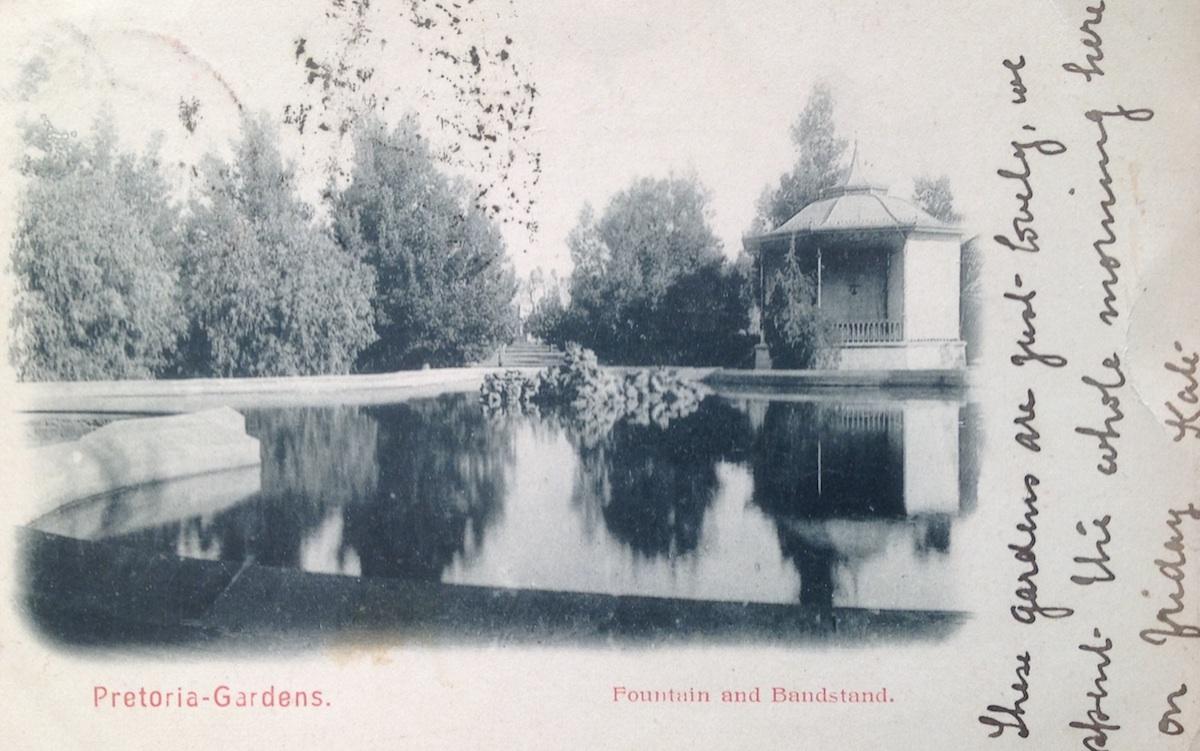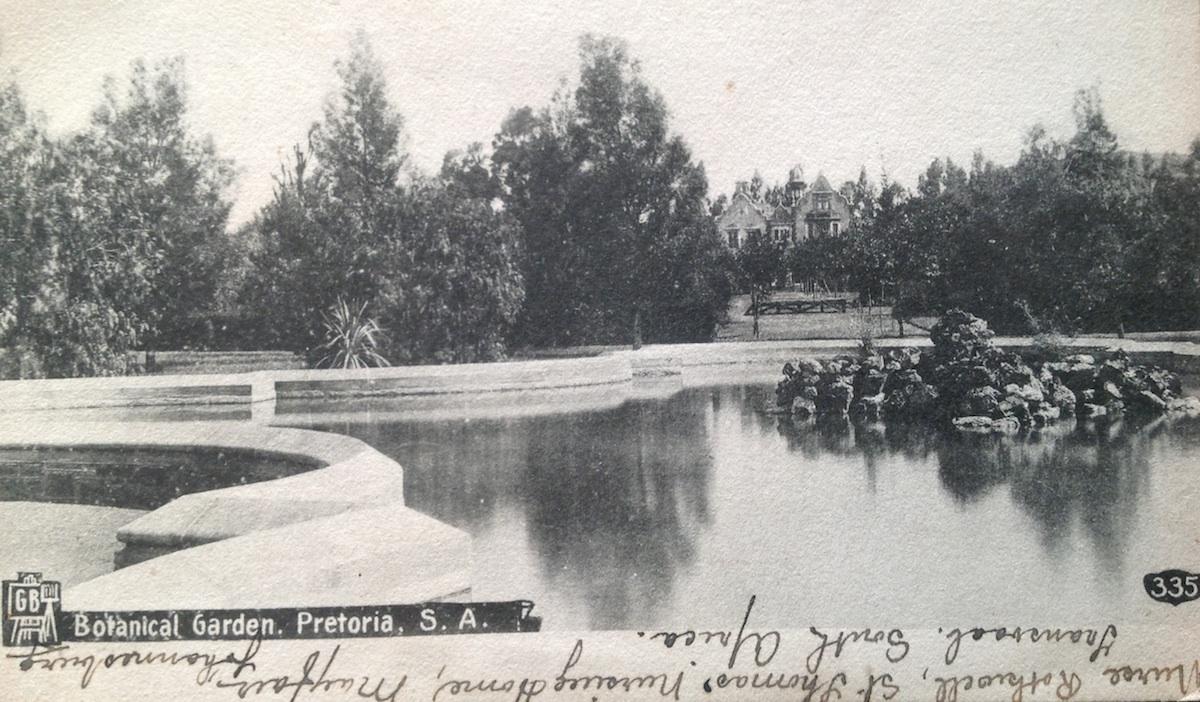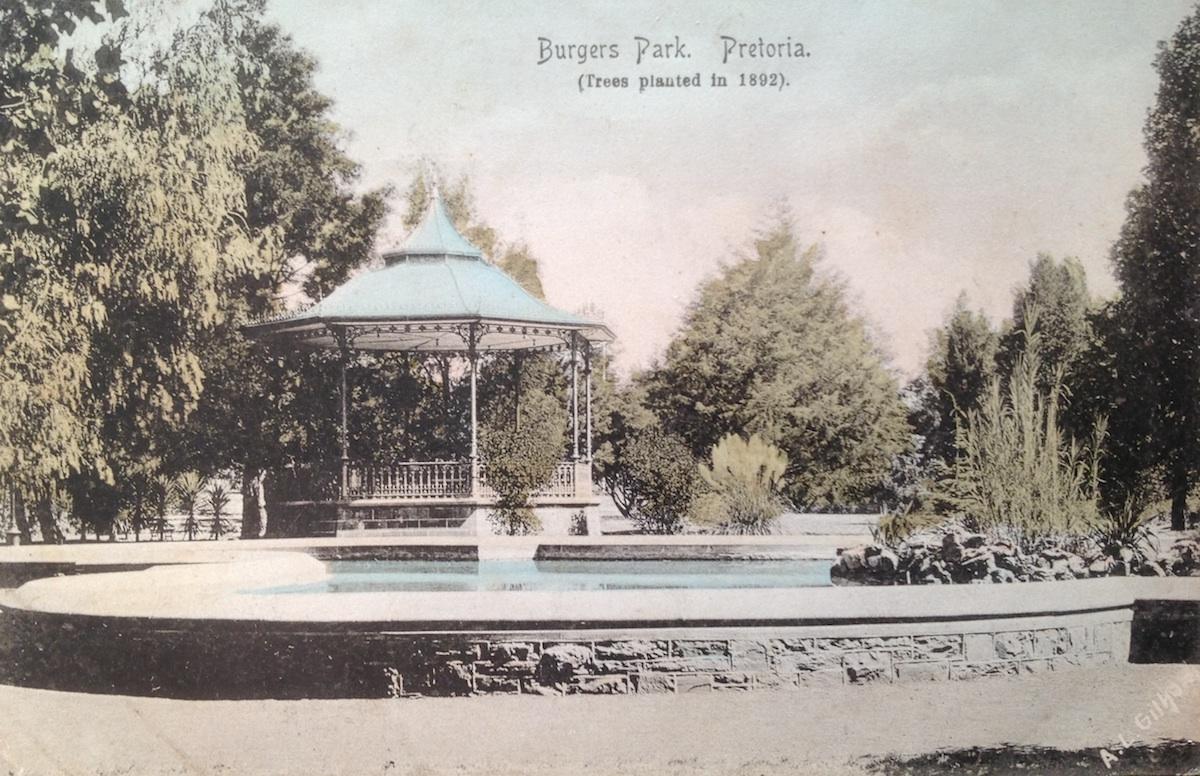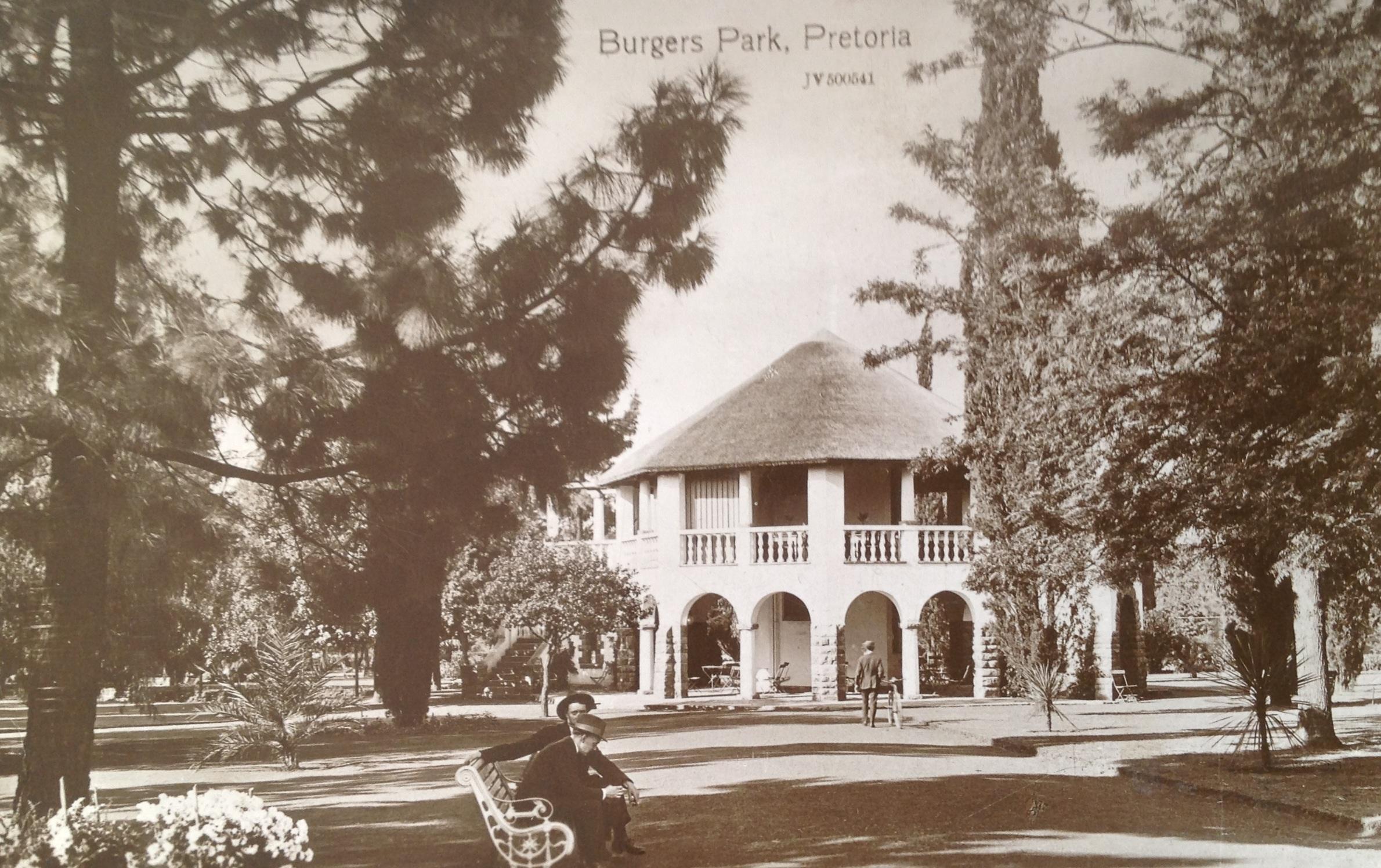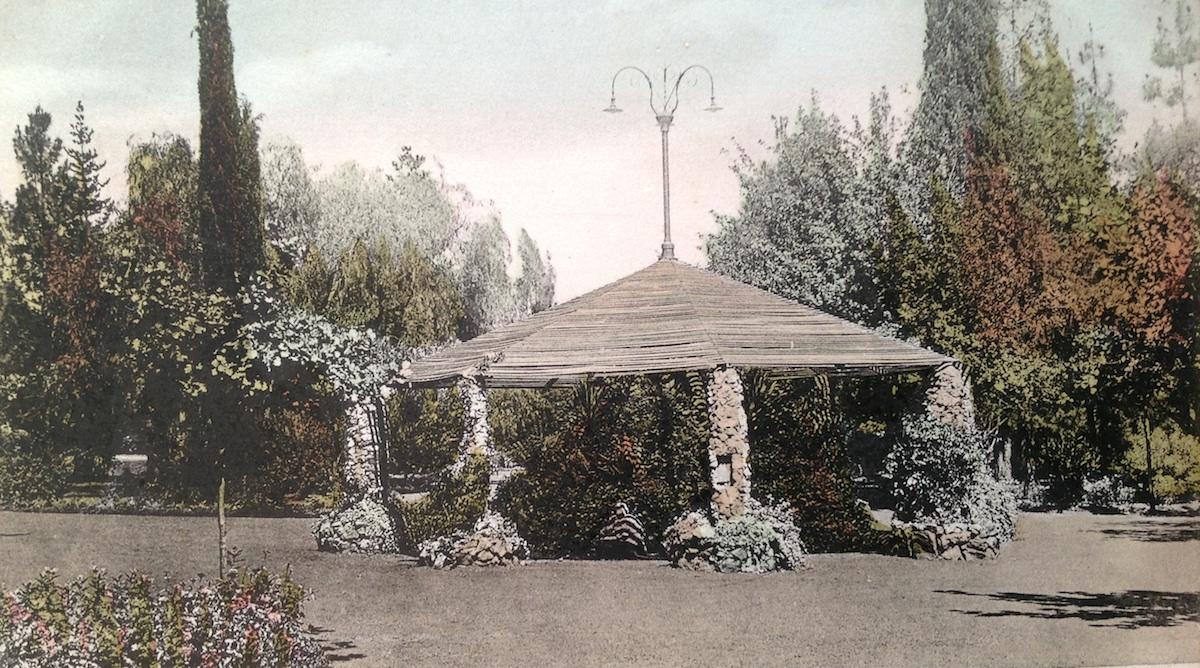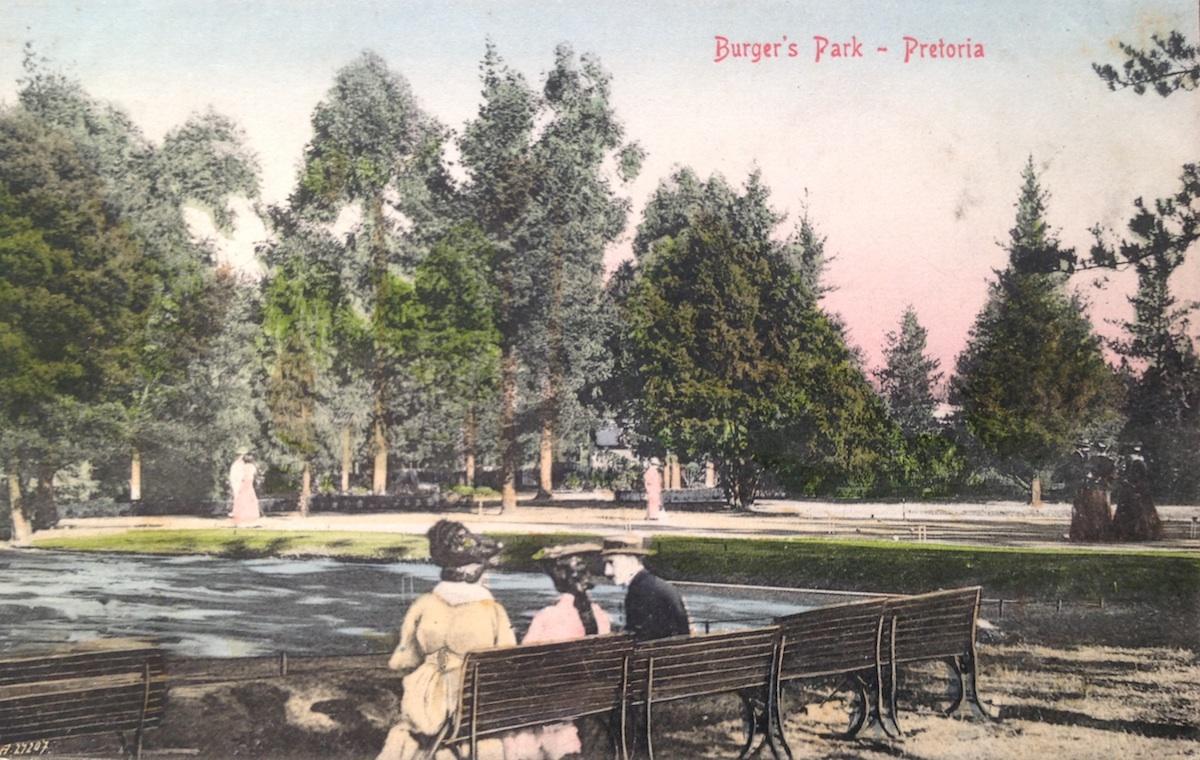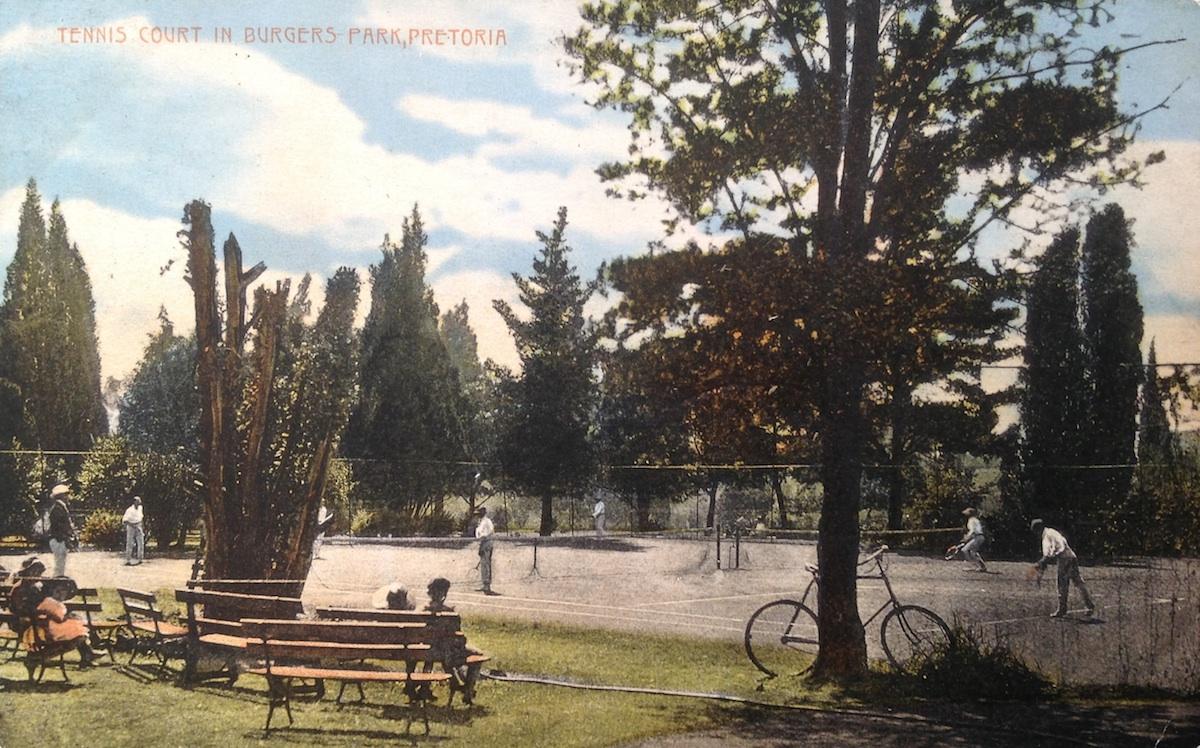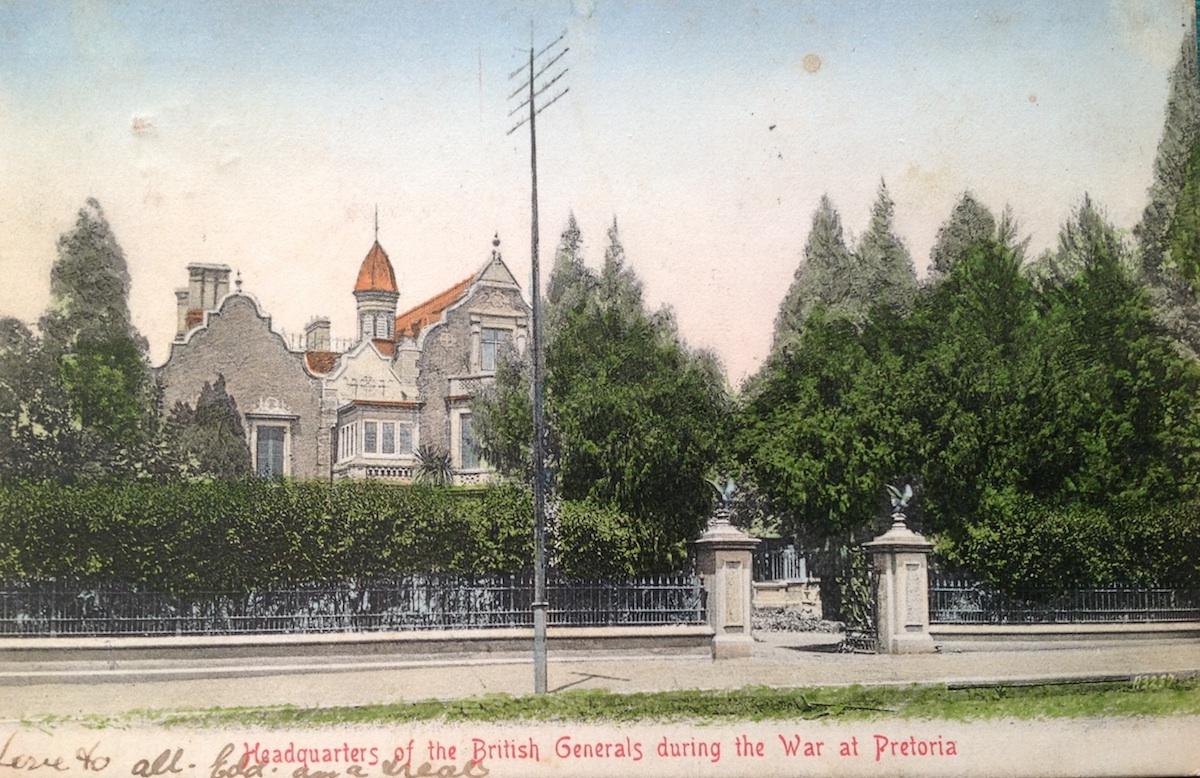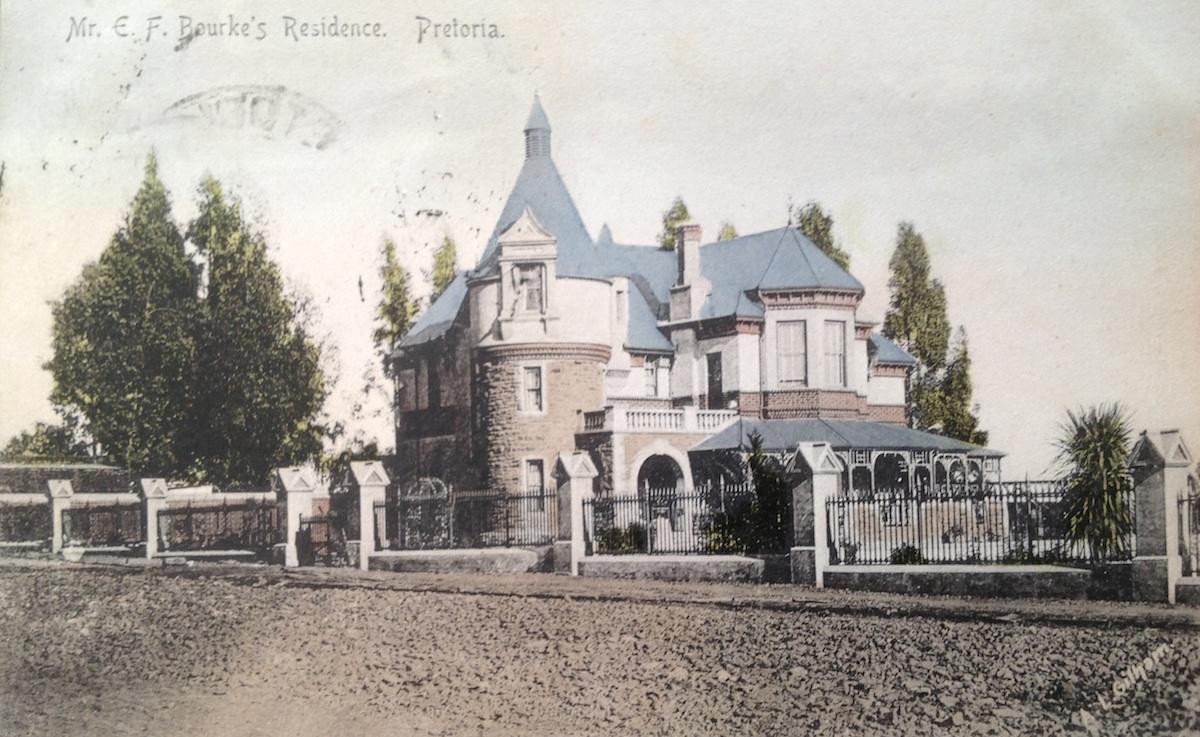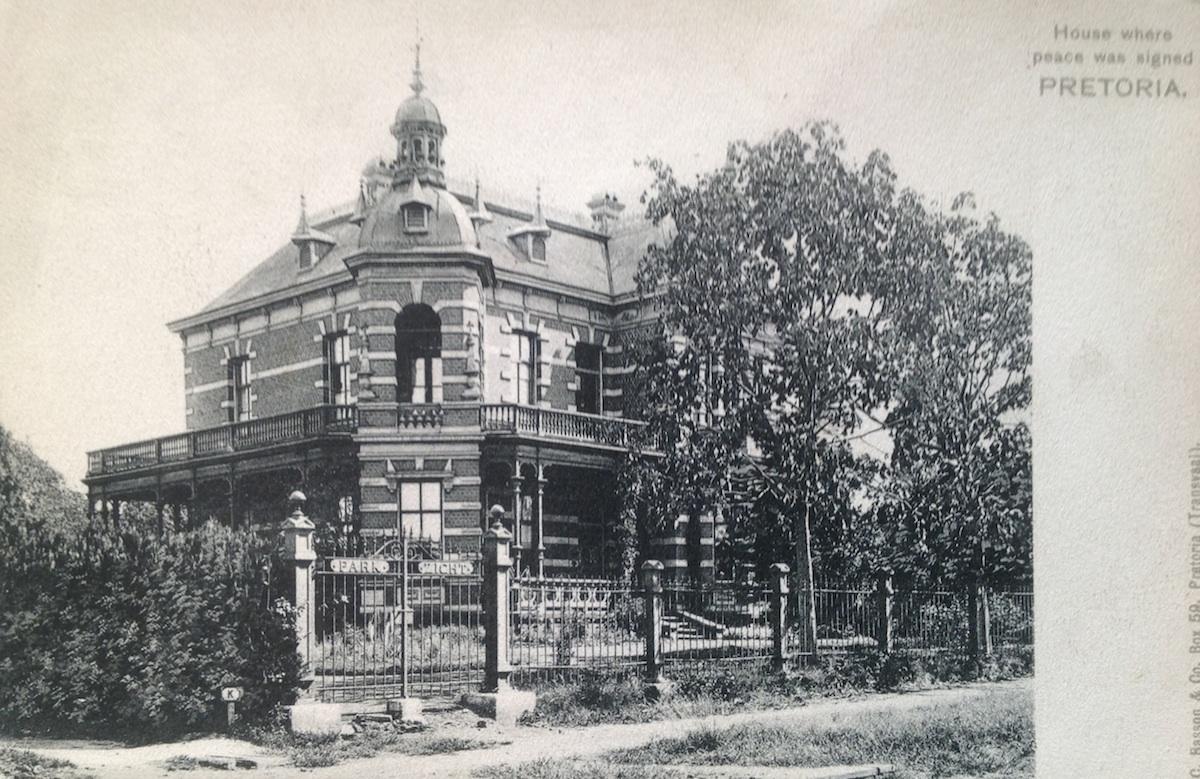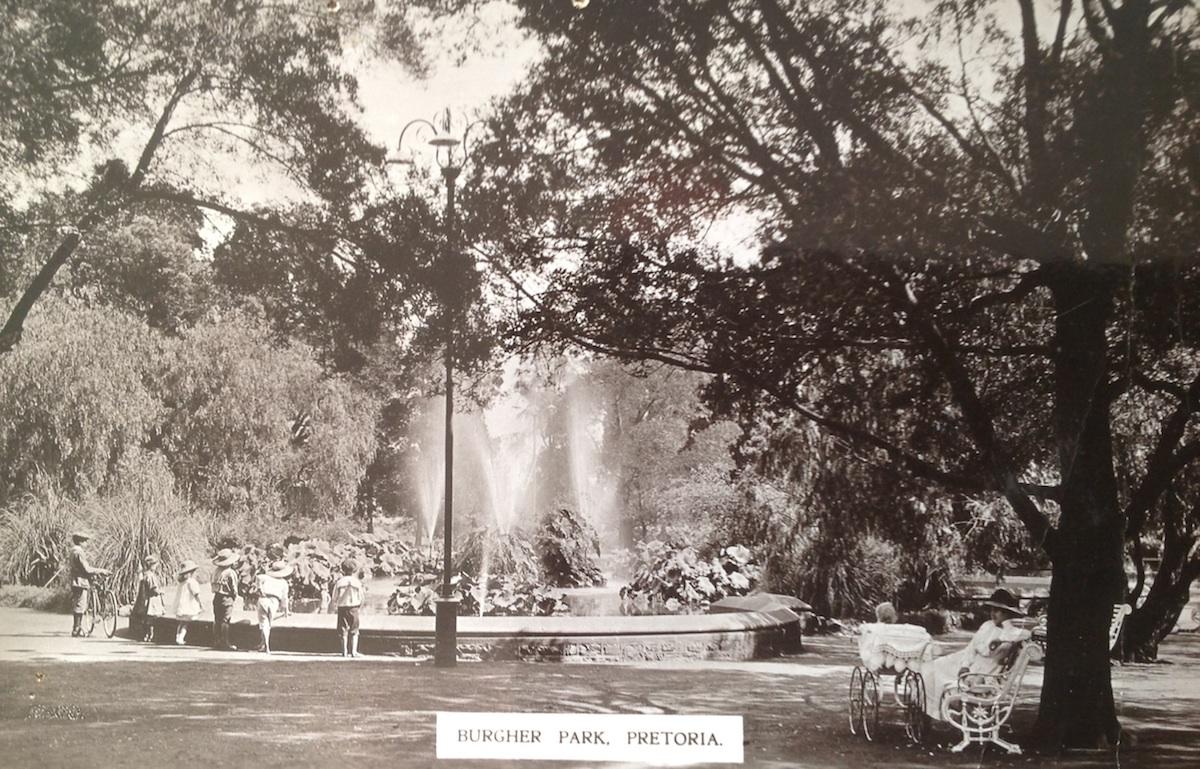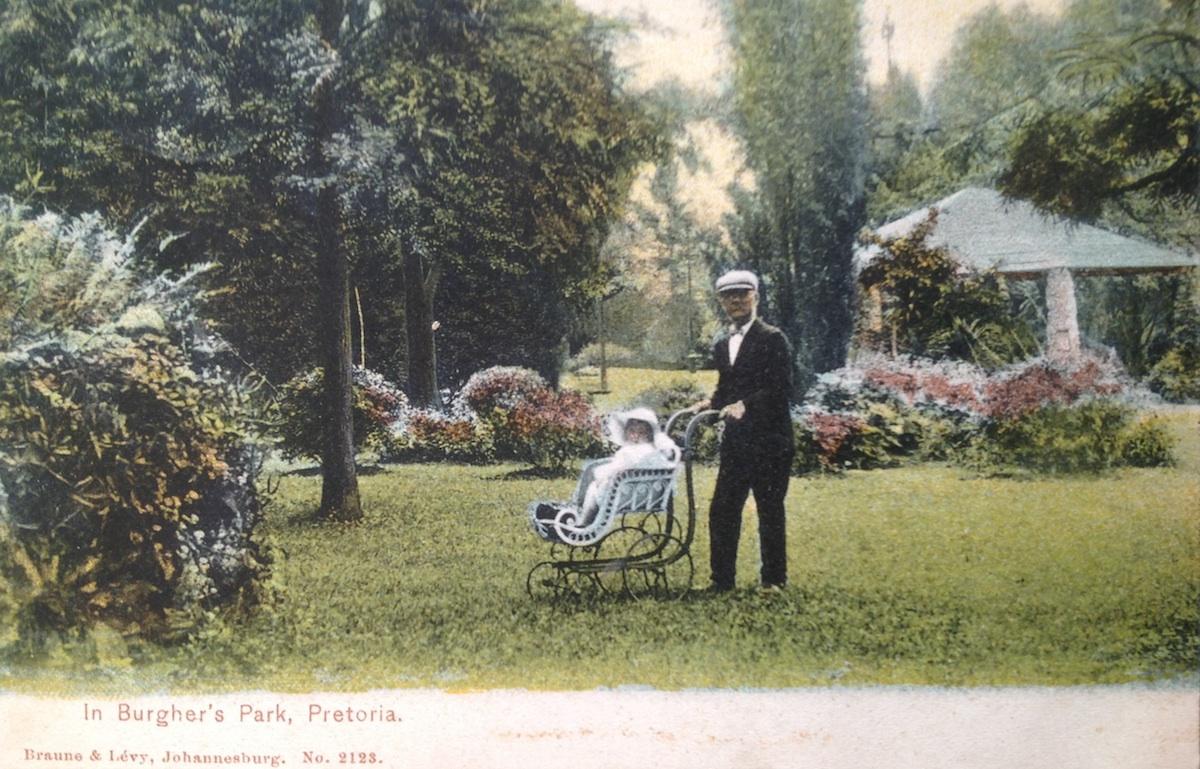
Disclaimer: Any views expressed by individuals and organisations are their own and do not in any way represent the views of The Heritage Portal. If you find any mistakes or historical inaccuracies, please contact the editor.
During Pretoria’s first 20 years of existence it had no public parks. The only spaces accessible to the public at the time were the Church and Market squares.
As early as 1874, the space where Burgers Park is located today, was allocated to become Pretoria’s first botanical garden.
Today a declared heritage site, the park was only officially named Burgers Park during 1894.
The first 10 years (1874 to 1884)
During 1874, the then ZAR president Burgers followed through on Preller’s proposal from 3 years earlier for Pretoria to establish a botanical garden by presenting this proposal to his Volksraad (House of Assembly). This proposal was approved on 8 October 1874. The Volksraad in turn offered 18 stands in Pretoria for this purpose. These stands were based between Jacob Maré, van der Walt and St. Andries Street (Renamed to Jeff Masemola, Lilian Ngoyi and Thabo Sehume Streets respectively).
Picture postcard circa 1905 showing St. Andries Street, looking north, with the park on the left hand side. The fence seems to be a wooden structure and maybe the same fence erected by Bourke & co during 1896. Card published by Braune & Levy.
Other than the donation of these stands, the Volksraad further approved an annual £100 park design and maintenance fee. The supervision of the park was the government’s responsibility then.
Following this decision, the government appointed the Scotsman John Hunter McLea (born May 1836) as the first state botanist of the park on 7 December 1874 – at a salary of £300 per annum.
Prior to his appointment in Pretoria, McLea was the curator to the Graaff Reinet botanical garden (established during 1872).
During March 1875, Mclea submitted proposed regulations to the government pertaining to the botanic garden. By May the same year he had planted flowers and vegetables and grown thousands of young trees from seed. At one point McLea received 484 packets of flower, shrub and tree seeds from the Royal botanical gardens at Kew, England. He attempted to develop the garden as fast as available labour allowed.
A committee, consisting of eight prominent citizens, was appointed to focus on the continuation of the layout of the park. Part of this committee’s responsibility was to collect funds from the public for work to be done in the park. The park also relied on donations and received a variety of tree, flower and shrub seeds (from McGibbon attached to the Cape botanical gardens, amongst others).
Due to this committee’s indecisiveness around the way forward for the park, and without an official employment contract and support, Mclea’s position became untenable and he resigned during September 1875. He was succeeded by Otto Lincke who was appointed at a salary of £200 per annum.
McLea returned to the Graaff-Reinet botanical gardens as curator at a salary of £200 per year. He held this post between 1876 and 1878, where, whilst at work at these gardens he died of a stroke at the young age of 42.
The Pretoria botanical garden was well established when Lincke took over, for on 5 January 1876 Lincke advertised in the Staats-Courant (Government Gazette) that a variety of trees and bulbs were available for sale. During December 1876, Lincke requested four weeks leave to collect plants and seeds in the Transvaal.
In the Transvaal book almanac and directory for 1877, Lincke advertised the botanic garden with the claim that he could supply all sorts of trees and plants suitable for the local climate, as well as agricultural and garden seeds including bulbs, to buyers in the Transvaal and Orange Free State.
Then, barely two and a half years into the existence of the newly establish botanic garden things changed drastically.
During April 1877, the South African Republic was annexed by the British under Sir Theophilus Shepstone. During this period, a new committee was appointed by the British administration to identify a more suitable site for the botanical garden. NJR Swart, previously the state secretary to President Burgers, now in the service of the English, announced during June 1877 that the positioning of the current park was poor and too rocky. The decision was made to establish the new botanical garden at Knoppiesfontein to the west of Pretoria. Swart further recommended to the British interim government that the old botanical garden should rather be sold.
Plants in the “old” botanical garden were moved to the new garden, based near the present Weskoppies hospital. The “old” botanical gardens, although not sold, deteriorated.
Lincke continued to perform his duties during these uncertain times. Following a government proclamation that was in force at the time prohibiting the importation of plants, seeds and bulbs in order to prevent the introduction of the dreaded Australian bug into the Transvaal, Lincke on 22 May 1877 requested that the proclamation be changed to allow seeds to be imported from Europe and America, which were still free of the pest. His advice was accepted by the administration and the revised proclamation published in the Staats-Courant on 9 June 1877.
Lincke must have tendered his resignation early 1878, for in March that year he wrote to Dr. Lyle wishing to withdraw his resignation.
By December 1879 Lincke had clearly been replaced as curator in that a new curator, G. Baikie, advertised trees for sale in the Staats-Courant. Lincke seems to have been arrested for some reason at this point in that during July 1878 he demanded compensation for a horse that was lost at the time of his arrest.
The botanical garden at this new location was never fully established in that there were not enough funds to complete the project.
It would only be many years later that a botanical garden was established east of Pretoria (during 1946).
Picture postcard dated April 1905, showing healthy plant growth. Card published by Sallo Epstein.
The resurrection of the park - 1885 onwards
During 1885 Mrs. Leyds wrote (loosely translated from Dutch) – “In front of our little house is a square piece of ground overgrown with grass and weed. Earlier it was the botanical garden commissioned by Burgers. The British however removed the plants to replant them elsewhere where they are currently rotting. Now the piece of ground is used for cricket and lawn tennis”.
A photograph taken of the area during 1888, confirms Mrs. Leyds’s version in that it showed an open patch of bare ground criss-crossed with foot paths where the local population took short cuts across it.
During 1887 the park again was under threat in that there were two requests submitted – one to swop 30 Sunnyside based stands for the botanical gardens and another request from the Dutch Reformed Church applying to have a portion of the botanical garden allocated to build a church. This did not materialise in that the Volksraad, during which Kruger was present, declined such request.
During 1888, a further request was submitted by a Pretoria based advocate, Dr. Ameshoff, to rent the property from the government in order to erect a hotel. Although approved by the government, a public outcry resulted in the gardens being declared as “public recreational grounds for Pretoria and surrounds”.
During 1890, the first indications surfaced around the intention for the old botanical garden to be converted into a normal park. During 1892, George Heys was awarded the contract to lay out the park which was subsequently named Burgers Park during 1894. It is for this reason that the park was occasionally also referred to as Heys Park. Heys was assisted by botanist James Hunter in completing the task.
All that survived of McLea’s plan during 1890 was the division of the park into four sections by strolling paths meeting at a central fountain.
During April 1894, 24 park regulations were established – One of which was that the park would fall under the supervision of the magistrate and that he would be entitled to use prisoners to keep the park clean.
During 1896, a contract to the value of £600 was awarded to Bourke & Co to fence the park. It is assumed that this was the first of a number of fences to be erected during the 144 years existence of the park.
During 1902 there was a suggestion that the Kruger statue had to be erected in Burgers Park instead of Prince Park to the west of Pretoria. This suggestion was rejected in that it was argued that the park was not big enough to justify the erection of the Kruger statue.
Mayoral receptions in the park were not uncommon. One such reception was during September 1911 to welcome General Louis Botha and his wife back from London. More than a 1000 people attended this welcoming reception. Another evening reception attracted some 3000 people. The park saw many other festive occasions, fetes, receptions and charity affairs over the years. Band concerts were a regular feature until around the 1960s.
Structures and statues in the park
- Ornamental pond – The first of all the structures in the park, the pond was built during 1892
Picture postcard dated May 1904: Showing the fountain and bandstand which were erected during 1892 and 1895 respectively. Melrose House was visible from the fountain then. Today, this view from the fountain is blocked by the Kiosk. The bandstand on this image suggests that it has not always been an open structure. The bandstand has a storage room underneath the small staircase that leads up to the platform, the door of which is just behind the tree in front of the bandstand. Card published by Pretoria based Transvaal Book store.
Picture postcard circa 1902. An early photograph showing the pond looking north with Melrose House in the background. The curators cottage was clearly not built when this photograph was taken in that it does not appear on the image in the background on the left of Melrose House. Although the park would have been named Burgers Park at the time the picture was taken, the inscription still refers to it as the Botanical Garden. Card published by Cape Town based Budricks’ Art galleries.
- Bandstand – George Hayes ordered this Victorian styled octagonal shaped iron frame from MacFarlane & Co in Glasgow and it was erected in the park during 1895. The style originates from Indian gazebos typically found in Muslim palace complexes and gardens. It is known that during cool summer evenings the band of the 24th regiment, based at Roberts Heights, would perform on the bandstand. The bandstand has a small door, just underneath the steps that leads up to the platform, that opens into a storeroom underneath the platform.
Picture postcard circa 1905 showing the fountain and bandstand taken a number of years later compared to the image above. Note the comment on the card suggesting that the trees on the image were planted during 1892. Photographer A.L. Gilham. Card published by Pretoria based W.E. Burmester & Co.
- Pavilion (with a refreshment kiosk) – Built in Neo-classical style during 1911. This structure was designed by Vivian Rees-Poole. Rees-Poole was also responsible for the redesign of Church Square during 1912. This pavilion was the scene of many glamorous functions.
Real picture postcard Circa 1915 of the Kiosk which was built during 1911. Card published by Cape Town based Valentine & Sons.
- Curators cottage – The initial “tuinmanswoning”, designed by Sytze Wierda, was built during 1893, but replaced by the existing building during 1904. Based in the south-eastern corner of the park, this house, based on the American designed Erasmus Castle (in the east of Pretoria), built the year prior, has been described as being built in a Romantic European character containing rich Nouveau details. This house, in use as a curator's cottage until 1975, was declared a national monument during 1979. The house was designed by Dutch architect van der Benn. Sadly, the author has not come across any photographs or postcard of this house taken before the 1920s.
- Scottish memorial – Placed in the western side of the park during the mid-1920's as a memorial for soldiers attached to South African Scottish regiment who died during World War 1. The existing statue is based on a similar memorial created by the sculptor Alexander Carrick based at Killen, Scotland. During 1923, the South African Scottish regimental association commissioned Carrick to create a similar statue in a larger scale. Certain aspects specific to the South African soldiers were however adapted accordingly (such as cap badge and bayonet). Part of the inscription on the bronze plate states: “Gladly they lived and gladly died”.
- Burgers’ Statue - President Thomas Francois Burgers’ statue was erected during 1954. Moses Kottler designed the statue.
- Florarium (Greenhouse) – The northern part of the park, where the florarium is based, was only developed in later years. The florarium was erected during 1974.
Picture postcard circa 1910 of a structure that seems to contain some ferns. Was this an early attempt to establish a greenhouse? Card published by Johannesburg based P.S. & C.
During 1898, the Queen Wilhelmina tree was planted in the south westerly corner of the park in celebration of her crowning as the queen of Holland. The original tree has since died, but a tree has been planted in a new spot some 200 meters away from the original tree. This tree is currently fenced by a Victorian cast iron fence.
Sporting facilities in the park
As early as 1892 four tennis courts and a sports field were meant to be built with the fountain in the middle of the park.
Pretoria based rugby players at a later stage requested the authorities to lay out a playing field in Burgers Park. The result of this was ludicrous in that the plan submitted by the then state architect provided for rugby and cricket fields as well as croquet and tennis facilities located in the four corners of the park. Both the proposed rugby and cricket fields on this plan were however the size of two tennis courts each! Only tennis and croquet therefore became reality. Croquet sadly failed to remain an attraction.
Picture postcard circa 1908 showing two croquet fields. This image can be described as a scarce view in that these fields did not remain in the park for long – mainly due to a dwindling interest in this pastime. Card published by Sallo & Epstein.
Picture postcard circa 1908 showing two tennis courts in the park. Card published by Cape Town based G.B. & Co.
Residential area around the park
During the late 1890’s, the area around Burgers Park was described as an upmarket residential area. Some examples include:
- Melrose House (initially called Melrose Villa) – George Heys, also owner of Zeederberg long distance coaches, built the house which was completed towards the end of 1886 (with further additions during the 1890s). Lord Roberts moved into Melrose house during the Anglo-Boer war followed by Kitchener. Heys allegedly resided with Bourke at Barton Keep during the Anglo-Boer war and returned to Melrose House post the war during 1903.
Picture postcard dated February 1907: Melrose House overlooking Burgers Park across the road. The owner was George Heys who also had a role to play in the development of Burgers Park. His house was occupied by two British generals during the Anglo-Boer war (Roberts and Kitchener respectively). The peace accord between Boer and Brit was signed in the dining room of this house during May 1902. Card published by well-known card publisher Sallo Epstein.
- Barton Keep – Based in Jacob Maré Street between Andries and Paul Kruger Streets. Plans for this dwelling were drawn up in the Netherlands and it was built by the Dutch between 1887 & 1889. Edmund Bourke, acting mayor during the Anglo-Boer war and 1st elected Pretoria mayor (1903), was the owner. This house, today a declared heritage site, has been described as a good example of the romantic neo-mediaeval style – with countless little portals & Victorian nooks and crannies. The dining room could allegedly seat 30 people comfortably. The house saw regular receptions and entertainment functions.
Picture postcard dated November 1906: E.F. Bourke’s house which was known as Barton Keep. Barton Keep is located just one block west of Burgers Park, also in Jacob Maré Street. Photographer A.L. Gilham. Card published by Pretoria based W.E. Burmester.
- Parkzicht - the house opposite the park, based on the corner of van der Walt and Jacob Maré was used by the Boer generals during the signing of the peace accord – which was signed next door at Melrose House during May 1902. The gates of this house, with the name “Park” and “Zicht” on them, form part of the northern entrance to the Burgers Park (in Jacob Mare street entrance). Sadly only “Zicht” remains on one of the gates today. The house, designed by Klaas van Rijsse, was demolished during the early 1960s and has been replaced by flats.
Picture postcard dated November 1906: Park Zicht (Park View) was based next to Melrose House also overlooking Burgers Park. The Boer Generals resided in this house at the time of negotiating a peace accord with the British. The inscription on the card “House where peace was signed” is therefore incorrect. Card published by Pretoria based C. Basson & Co.
Author’s connection to the park
The author’s father, Willem Hugo Hardijzer, a Dutch trained horticulturist, arrived in South Africa in the middle of 1957 and took up employment with the Pretoria Municipality. He was appointed as the curator of Burgers Park during the early 1960’s.
During this period, the Hardijzer family resided in the curator’s cottage. Although it cannot be described as a double storey unit, the house has a unique feature, namely a small room up a flight of stairs (in a Victorian music room fashion).
The author holds fond memories as a young boy of this park and the house. The Scottish Memorial as well as the bandstand attracted regular band activities which left a permanent impression on a young boy, so much so that he later became the base drummer in his high school’s marching band.
The small door underneath the bandstand remained a point of fascination to a young boy – dingy, with a distinct moisty smell and high level of humidity. The park was certainly an outstanding playground during his formative years.
Real picture postcard – early 1920s, showing fountain and citizens enjoying / relaxing in the park. Card published by Pretoria based E. Schweickerdt.
Postcard images produced of the park prior to 1920 today provide us with an impression of what the park used to look like – Not much different to today, probably just better maintained then.
Main image: Picture postcard dated June 1907 showing a lusciously healthy park (with the fern or greenhouse in the background). The pram itself is of interest to antique collectors. Card published by Braune & Levy
About the author: Carol is passionate about South African Photographica – anything and everything to do with the history of photography. He not only collects anything relating to photography, but also extensively conducts research in this field. He has published a variety of articles on this topic and assisted a publisher and fellow researchers in the field. Of particular interest to Carol are historical South African photographs. He is conducting research on South African based photographers from before 1910. He is also in the process of cataloguing Boer War stereo images produced by a variety of publishers. Carol has one of the largest private photographic collections in South Africa.
Sources
- Allen, V. (1971). Kruger’s Pretoria – Buildings and personalities of the city in the nineteenth century. Balkema. Cape Town.
- Biographical database of Southern African Science (John Hunter McLea)
- Biographical database of Southern Africa Science (Otto Lincke)
- Burgers Park curator’s cottage (Ablewiki/WikiUP)
- Burgers Park bandstand (Ablewiki/WikiUP)
- Jansen, A. (2005). Curator’s cottage: Burgers Park. Africana Society year book No 22.
- Engelbrecht, J.P. (1960). Burgers Park. Pretoriana – Journal of the Pretoria Historical Association, 32 & 33.
- Engelbrecht, S.P.; Agar-Hamilton, J.A.I.; Pelzer, A.N. & Behrens, H.P.H. (1955). Pretoria (1855 – 1955). History of the city of Pretoria. Centenary year 1955. City Council of Pretoria.
- Greyling, P.J. (2000). Pretoria and the Anglo-Boer War. A guide of buildings, terrains, graves and monuments. Protea Book House. Pretoria
- Meiring, H. (1981). Pretoria 125. Human & Rousseau. Pretoria
- Rex, H.M. (1960). John Hunter McLea – Pretoria se eerste “direkteur van parke”. Pretoriana – Journal of the Pretoria Historical Association, 32 & 33
- Scottish memorial at Burgers Park (Allatsea.co.za)
Comments will load below. If for any reason none appear click here for some troubleshooting tips. If you would like to post a comment and need instructions click here.

